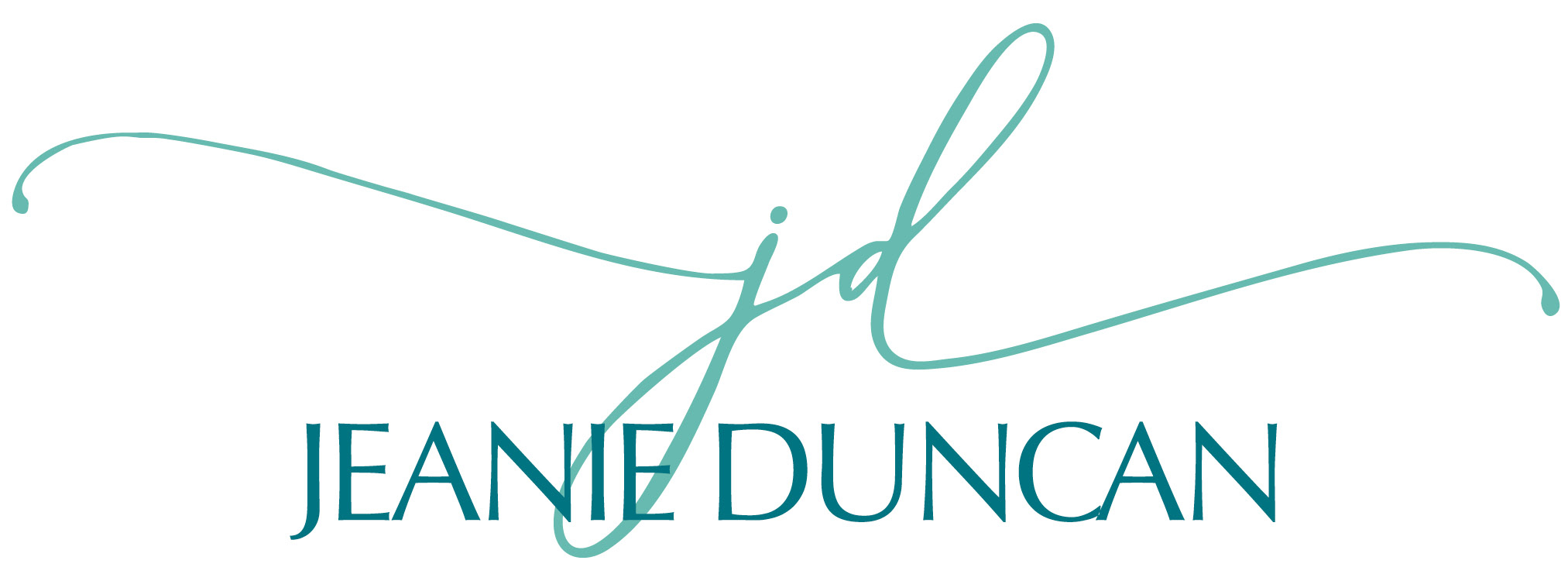
May 24, 2016 | Leadership

Leaders often fall into the trap of thinking that working harder will get them ahead—and into that next leadership role. Hard work will only take you so far, though. The strongest leaders are self-aware and know how to use their strengths strategically in a way that is both to their own advantage and benefits their organization and its people.
As I wrote about in The Brand of You, you’re constantly making impressions on others, from what you say or do to how you react and interact. And every impression you make can be an asset or a liability as you engage in the tasks and roles of leadership.
It’s essential that you become a self-aware leader so that you can make the most of the opportunities you have to influence others. Self-awareness is a vital, yet often-overlooked quality among other, more prominent assets like vision, strategic thinking, and influence. You never want to be the last one to know about a weakness or a missed opportunity to leverage your strengths. In fact, self-awareness can be the deciding factor in your success as a leader.
So, what do I mean by being self-aware?
- Being aware of your own strengths and weaknesses. When you know your assets (strengths) you can bring them to bear appropriately; when you have a clear view of your weaknesses and/or behaviors that create tension or divide, you can mitigate the negative impact or derailment.
- Having an ability to read others – being able to assess their styles and preferences, as well as their strengths and weaknesses. This isn’t about manipulating other people, but rather about paying attention and tuning in to those around you. Knowing others’ styles and preferences helps not only when it comes to influencing others, but also when it comes to putting together a high-performing team. Success depends on your ability to recognize strengths as well as potential deficits so that you can best align your talent with the right roles and responsibilities. (This skill is also helpful in hiring people with complementary abilities and leveraging the collective strengths of the team.)
- Paying attention to your behaviors and the effects of what you say or do on others. Do you attempt to motivate and inspire people to achieve their goals? Do you try to advocate for your ideas because you’re convinced they’re right? Do you attempt to negotiate a bridge between competing opinions? We all have our own natural preferences and styles of influencing others, managing conflict and communicating. One thing to keep in mind is how the same behavior might have different impact on different people. It’s a good idea to check in regularly and seek feedback from those with whom you work.
Here are a few good tips for increasing your self-awareness and developing yourself into a more effective leader:
- Pay attention. Notice your behavior and the impact it has on others.
- Complete instruments that reveal your personality type and natural preferences (for example, the MBTI and 360 assessments). Work with an individual certified in interpreting those results who can help you draw connections and lift out insights along with recommending developmental tools.
- Find an executive leadership program or experiential learning program that has a strong coaching component emphasizing your personal style.
- The next time you lead a project or team meeting, ask a colleague to observe a particular behavior or two on which you’d like feedback. Afterward, seek his or her thoughts on the situation, your observable behavior, and the impact it had on them, others, or the task at hand.
Here’s a word of caution: Being (or becoming) self-aware isn’t the whole story. I’ve found that the most effective, most fulfilled leaders are committed to leveraging their strengths and mitigating their weaknesses. Even more? They check their egos and acknowledge that it takes a team of individuals with diverse and complementary strengths and talents to collaborate and achieve goals.
There’s a great quote in a Harvard Business Review article by Anthony K. Tjan, co-author of the book Heart, Smarts, Guts, and Luck: “The trinity of self-awareness is to know thyself, improve thyself, and complement thyself.”
It takes an array of competencies to lead people and organizations—from the abilities to communicate well and delegate effectively to a great capacity for turning strategic thinking into tactics that get the desired results. I encourage you to continue developing yourself in those areas, but remember: Self-awareness is the key to your success as a leader. Understanding your own abilities and natural tendencies is the first step in being able to harness the talents and skills of others.
See my other related blog posts:
 About Jeanie Duncan: Jeanie is President of Raven Consulting Group, a business she founded that focuses on organizational change and leadership development in the nonprofit sector. She is a senior consultant for Raffa, a national firm working with nonprofit clients to lead efforts in sustainability and succession planning, executive transition and search. Additionally, Jeanie serves as adjunct faculty for the Center for Creative Leadership, a top-ranked, global provider of executive leadership education.
About Jeanie Duncan: Jeanie is President of Raven Consulting Group, a business she founded that focuses on organizational change and leadership development in the nonprofit sector. She is a senior consultant for Raffa, a national firm working with nonprofit clients to lead efforts in sustainability and succession planning, executive transition and search. Additionally, Jeanie serves as adjunct faculty for the Center for Creative Leadership, a top-ranked, global provider of executive leadership education.

Apr 26, 2016 | Leadership, Personal Brand

In my related blog post, The Brand of You, I introduced a framework around leadership brand, as well as a few tools and practices to help you think about and develop your leadership brand. To briefly recap – your brand is what people say about you when you’re not in the room. It’s not what you say…it’s what other people say about you that counts here.
You already have a brand whether you realize it or not, so it’s important to get conscious about it and proactively shape and define how you most want to show up and be seen in the world, influence others, and get results.
Here, we take the ideas one step further – from knowing and exhibiting your ‘current’ brand to considering your future, or ‘aspirational,’ brand. When you contemplate your career development path and goals, it’s important to realize that what got you here won’t necessarily take you there. It requires you to reflect on “if this is what I desire and where I want to go, then what needs to change or evolve in order for me to get there?”
Your Leadership Brand
Here’s an exercise to help you create your aspirational leadership brand: Think out to a future point – 6 months, 1 year, 3 years, 5 years – and envision that you have the most rich and fulfilling life you can imagine (both personal and professional). How might your current way of showing up and presenting yourself need to change or evolve in order for you to achieve this vision? Here are a few questions to guide your thinking:
- What is the impact you most want to have on others or make in this world?
- How would you define your purpose or intention?
- Is this tied to a particular position or role you aspire to?
- What top three things do you want to deliver?
- What do you want to be known for?
- What is your reputation?
- How can your brand be boiled down into one bold, powerful, enrolling statement for you to use as your slogan or motto?
- What action steps will you take to create your future brand?
- Select two images that represent: 1) How are you known now. 2) How you would like to be known in the future. Post these in a place where you will see them every day.
In my executive coaching work, I partner with clients to help them define both their current and aspirational leadership brands. One recent example was with a nonprofit executive who held the role of COO in her organization and was an internal candidate for CEO.
She had held the COO position for ten years, was highly competent and experienced in her role, and well regarded by her colleagues. In preparing for her candidacy and the interview process, she needed to present herself in a new light, as the leader who was ideal to transition from leading a key organization function to leading the entire enterprise. It was helpful to clearly define her current brand as well as her aspirational brand not only for her benefit, but also to help the board of trustees and search committee visualize her as the right leader in this role.
She vividly imagined herself appointed as CEO and being in that role for a year, experiencing great success for herself, the organization, and its people. In doing so, she was able to define her future brand in a vivid, concise way. She compared this to her current brand and was able to develop specific actions needed to begin “acting as if” she was this future brand now. Her colleagues and the board were able to see her enhanced level of executive presence, influence, and confidence, which served her exceptionally well in the process, and was ultimately key in her being appointed as the new CEO.
Many people dismiss image building as superficial and unimportant; however, leaders benefit from knowing how they come across to others and how their behaviors impact different people. A lack of awareness and focus on this can derail or prevent leaders from advancing on their career path.
A study of 150 senior executives who attended CCL’s Leadership at the Peak program shows that the image, or brand, leaders convey has a significant correlation to perceptions of their leadership skill. In this study, leaders who conveyed a strong vision were rated higher on several important factors than those who conveyed a weaker vision – factors such as the ability to lead change, being dynamic, competence in strategic planning, being farsighted, inspiring commitment, being original, and having a strong executive image. Each of these factors is tied to specific behaviors and can therefore be improved through awareness and practice.
As in the CEO example above, once you identify specific elements for how you’d like to evolve your brand, seek out specific ways to practice in order to test drive and ‘anchor in’ new ways of being. Here are a few ideas, and you probably have some thoughts as well:
- Lead a project that might be a stretch opportunity, demonstrating your ability to be seen outside the scope of your current image and brand.
- Consider your area of expertise and seek out opportunities for public speaking where key influencers or stakeholders can see your leadership in action.
- Take a more active role in speaking or presenting at board meetings.
- Whenever possible, be seen as a strategic thought leader – to solve a problem, leverage an opportunity, etc.
You may also be interested in reading this related blog post: The Brand of You
Resources and Suggested Reading:
Criswell, C., & Campbell, D. (2008). Building an authentic leadership image. Greensboro, NC: Center for Creative Leadership.
Kossek, E. & Lautsch, B. (2008). CEO of me: creating a life that works in the flexible job age. Saddle River, NJ: Prentice Hall.
Peters, T. (1999). The brand called you. New York, NY: Knopf Doubleday Publishing Group.
Schawbel, D. (2010). Me 2.0. New York, NY: Kaplan Publishing.
 About Jeanie Duncan: Jeanie is President of Raven Consulting Group, a business she founded that focuses on organizational change and leadership development in the nonprofit sector. She is a senior consultant for Raffa, a national firm working with nonprofit clients to lead efforts in sustainability and succession planning, executive transition and search. Additionally, Jeanie serves as adjunct faculty for the Center for Creative Leadership, a top-ranked, global provider of executive leadership education.
About Jeanie Duncan: Jeanie is President of Raven Consulting Group, a business she founded that focuses on organizational change and leadership development in the nonprofit sector. She is a senior consultant for Raffa, a national firm working with nonprofit clients to lead efforts in sustainability and succession planning, executive transition and search. Additionally, Jeanie serves as adjunct faculty for the Center for Creative Leadership, a top-ranked, global provider of executive leadership education.

Apr 19, 2016 | Leadership, Transition & Change
 As a newly appointed executive leader, one of the most important priorities is to establish your leadership agenda for the first twelve months. Typically this follows the 90-day entry plan and outlines what you expect to accomplish at the conclusion of your first year. Additionally, it can be an ideal tool for your board to measure your first year performance.
As a newly appointed executive leader, one of the most important priorities is to establish your leadership agenda for the first twelve months. Typically this follows the 90-day entry plan and outlines what you expect to accomplish at the conclusion of your first year. Additionally, it can be an ideal tool for your board to measure your first year performance.
If your organization has a current strategic plan, this document is aligned closely with that. However, if strategic plan development is a first year action item, this 12-month leadership agenda can help organize your thinking and outline key goals and strategies to chart the course initially.
Helpful tips in developing your agenda:
- Co-design the leadership agenda with your board chair, involving members of your board personnel committee or transition committee, if existing.
- Keep the document focused at a high, strategic level. Incorporate an adjoining action plan for your own personal use in implementation.
- In goal setting, balance realism with the appropriate degree of stretch to help manage expectations.
- Keep the leadership agenda front and center, using it as a guide to organize your weekly priorities and as a report card for board meetings.
- Adapt and revise the document through the course of the year. This is a living, breathing tool – things change, and you’ll learn a lot along the way that will inform this roadmap.
To help you get started, I’ve included a sample template here (PDF). Good luck charting your path, and remember “If you don’t know where you are going, any road will get you there.” – Lewis Carroll
 About Jeanie Duncan: Jeanie is President of Raven Consulting Group, a business she founded that focuses on organizational change and leadership development in the nonprofit sector. She is a senior consultant for Raffa, a national firm working with nonprofit clients to lead efforts in sustainability and succession planning, executive transition and search. Additionally, Jeanie serves as adjunct faculty for the Center for Creative Leadership, a top-ranked, global provider of executive leadership education.
About Jeanie Duncan: Jeanie is President of Raven Consulting Group, a business she founded that focuses on organizational change and leadership development in the nonprofit sector. She is a senior consultant for Raffa, a national firm working with nonprofit clients to lead efforts in sustainability and succession planning, executive transition and search. Additionally, Jeanie serves as adjunct faculty for the Center for Creative Leadership, a top-ranked, global provider of executive leadership education.

Mar 28, 2016 | Leadership, Personal Brand

Before we get into offering a few tools and practices to help you develop your leadership brand, let’s get clear on what we mean when we say “the brand of you.”
Your personal brand is what people say about you when you’re not in the room. It’s not what you say…it’s what other people say about you that counts here. What others convey about you is what creates your reputation, and it stays around a long time.
You already have a brand whether you are aware of it or not. With every behavior you exhibit, you’re making impressions on others, from what you say or do to how you react and interact – all of which can be an asset or a liability as you engage in the tasks and roles of leadership. It’s important to get conscious about it and proactively shape and define how you most want to show up and be seen in the world, influence others, and get results. The bottom line is, you can’t just rely on your skillset and expertise to be effective and get the job done.
So, the question is: “Is your brand what you want it to be?” The good news is everyone has a chance to stand out. And this is your opportunity to learn, grow your skills, and present yourself as you most desire. As you work on your brand, keep in mind that it is not about faking anything. It’s about surfacing and polishing behaviors and skills that allow your authentic, true self to be seen and be most effective. Think of it as starting today – you are a brand. How and for what do you want to be known?
Crack open a sense of possibility without limits. Think of your brand as your unique promise of value. It is your vision of who you are being and what you can do, bring, and deliver. It is a message that distinguishes you from everyone else by expressing what makes you unique and memorable. What brand are you today? Would you change anything about it? What will your personal brand be in a year?
Fortunately, you can have a great deal of control over the image others have of you. Laura Morgan Roberts of Harvard Business School puts it this way:
“People manage impressions through their nonverbal behavior (appearance, demeanor), verbal cues (vocal pitch, tone, and rate of speech, grammar, and diction), and demonstrative acts (citizenship, job performance).”
Crafting your image, or brand, requires you first to gain a clear picture of the image people currently perceive of you, then to decide what brand you would like to portray, and finally to develop the skills to close the gap. Let’s get started by having you explore a few questions as you consider your brand.
- If your brand is what other people say about you when you’re not in the room, what would your staff say? Consider peers, direct reports, and your boss. Don’t just stop at the office, but consider too what your spouse or partner would say. How about your children, siblings, and friends?
- What is the brand for which you think you are currently known? (List a few adjectives to describe you.)
- What is your unique offering, or what is it that you feel you uniquely deliver?
- What are your distinct quirks, characteristics, qualities, or gifts?
- What is the ‘look’ and ‘feel’ of brand YOU? A fun thing to consider: If you were a dog, what breed of dog would you be? Or if you were a car, what brand or model?
- If you had a leadership brand tagline – think Nike and “Just Do It” – what would it be?
- Is there alignment between your perceptions of what others think and your impressions of yourself? Ask for feedback.
You are in charge of your leadership brand, so invest in your learning and development as a leader. Think about your current job and your career path – how does your leadership brand support your work today? What 1 or 2 things might you tweak to help you be more effective? What do you need to learn or change to improve your leadership skills and impact?
A leader’s brand is constantly being created. Once you have taken a close look at your brand, the best strategy for crafting your brand is to practice. An effective leadership brand that seems instinctive or unconscious is very likely not. It takes skill and practice to be comfortable in your leadership role and have a brand to match. Here are some opportunities that permit you to practice behaviors. Can you think of others?
- One-on-one meetings
- Public presentations
- Board meetings
- Media interviews
- Interacting in the hallway, cafeteria, or parking lot
- Traveling with others on business
- Events or locations outside of work
In closing, I challenge you to live your leadership brand. One of my life maxims is “Act As If.” Whatever you most desire your brand and image to be, go ahead and live into it. Eat as if, walk as if, sleep as if…you get the picture. Once you have defined that unique thing that is wholly YOU, integrate that uniqueness into all you do, say, write, and create. Don’t wait another minute to get started!
Resources and Suggested Reading
Criswell, C., & Campbell, D. (2008). Building an Authentic Leadership Image. Greensboro, NC: Center for Creative Leadership.
Peters, T. (1999). The Brand Called You. New York, NY: Knopf Doubleday Publishing Group.
 About Jeanie Duncan: Jeanie is President of Raven Consulting Group, a business she founded that focuses on organizational change and leadership development in the nonprofit sector. She is a senior consultant for Raffa, a national firm working with nonprofit clients to lead efforts in sustainability and succession planning, executive transition and search. Additionally, Jeanie serves as adjunct faculty for the Center for Creative Leadership, a top-ranked, global provider of executive leadership education.
About Jeanie Duncan: Jeanie is President of Raven Consulting Group, a business she founded that focuses on organizational change and leadership development in the nonprofit sector. She is a senior consultant for Raffa, a national firm working with nonprofit clients to lead efforts in sustainability and succession planning, executive transition and search. Additionally, Jeanie serves as adjunct faculty for the Center for Creative Leadership, a top-ranked, global provider of executive leadership education.

Mar 21, 2015 | Conflict Management, Leadership
 As a sailor, when I see a storm building on the horizon, I intentionally alter my path to circumvent the system – tacking to port or starboard, or identifying a cove or marina to head into for safety…anything to escape the danger that lies ahead.
As a sailor, when I see a storm building on the horizon, I intentionally alter my path to circumvent the system – tacking to port or starboard, or identifying a cove or marina to head into for safety…anything to escape the danger that lies ahead.
In the business setting, our human tendency is to do the same – avoid the storm, the conflict, that we see brewing. We are a conflict-adverse culture and society. Often, our last (or near last) resort is moving directly into the issue, tension, and challenge to attend to what must be addressed.
So, why is this? Why do we avoid addressing and resolving conflict? Why is it so difficult? Afterall, it’s often identified as one of the most important competencies required of top leaders to succeed. Beyond the fact that conflict is flat out uncomfortable, I believe our aversion is due to a few key things:
- Many of us learn early on in our formative years to avoid making waves, to listen to others, and be polite. Personally, as a female growing up in the southeastern United States, I often would say one thing and mean another – too afraid to share my true thoughts and risk offending someone. My parents, as well as others who shaped and influenced me early on, taught me that questioning and being direct was considered rude, bossy, and aggressive, so I simply didn’t practice it.
- When starting out in our careers, we’re young, new in a position, trying to gain an understanding of the office culture, and learning the political landscape. We’re encouraged (whether expressed or not) to be tactful and diplomatic – “keep your head down and get the job done” – or else become known as the difficult employee…sometimes risking losing our job altogether.
- When we advance and move from a role as an individual contributor to a role of leading others, the relationships necessary for working together often spawn conflict. Our tendency can be to revert back to what we know well – our individual strengths, whether technical, financial, sales, etc. – and avoid the sticky, messy group dynamics of gaining alignment and commitment to work toward a common goal. We can also avoid acting as a result of preservation (of relationships, tradition, etc.) and territory, digging our heels in to protect our own viewpoints, values, and beliefs and refuse to move.
Conflict is difficult for a number of reasons – those mentioned above and others you can surmise. But difficult as it may be, addressing and resolving conflict is critically important to individual and organization success. It begins with defining what conflict is in the first place and understanding it as something to be dealt with instead of avoided.
At its core, conflict is disharmony and discord between people, interests, or ideas. It’s also natural to the human experience. Where there are people, there will be conflict. Afterall, people are emotional beings. We have deeply held beliefs, values, and experiences that have shaped who we are. We’re bound to bring this into how we express ourselves, make decisions, and communicate with one another. And when we do, we will differ, disagree, and sometimes clash. The key to making it work and being effective, is to learn to have open, honest debate and dialogue around issues of importance to the team. It can only happen if vulnerability-based trust exists.
Teams without trust often argue destructively because they are laced with politics, pride, and competition, rather than humble pursuit of truth. When trust exists, team members say everything that needs to be said and it leaves less to talk about behind closed doors. Conflict is always at least a little uncomfortable. And it’s inevitable that people will feel under some degree of personal attack. This is still no reason to avoid conflict.
As Patrick Lencioni states in his book, The Five Dysfunctions of a Team, “If team members are not making one another uncomfortable at times, if they’re never pushing one another outside of their emotional comfort zones during discussions, then it is extremely likely that they’re not making the best decisions for the organization.”
The problem around conflict that I most often see in relationships and teams is artificial harmony with no conflict at all, coupled with great fear of moving in that direction. It reminds me of a friend who told me that he and his girlfriend of two years had never had an argument. He shared this as a point of pride; however, I see this as a warning sign. The ability to have healthy, productive conflict is a symbol of maturity and sustainability in a relationship. When a relationship or team shows that it can survive an incident of significant conflict, it builds greater trust and confidence in the relationship.
Let’s examine a few key practices to engaging in and managing team conflict:
- Begin with trust building exercises. A team (or a relationship of any kind) and its members must know and trust one another before it can engage in courageous conversations and move into and through conflict together. (See key tips in my blog post: Team Trust – Critical Yet Rare)
- Identify “rules of engagement” and how you will address conflict together. Establish clear norms, keep these visible and present, and hold everyone accountable for what they’ve agreed upon. It’s important to ensuring a productive exchange of ideas.
- Gain clarity on viewpoints and comfort levels with conflict, because they can differ greatly. On one extreme are the people who are comfortable arguing passionately; on the other are those who are not comfortable expressing the mildest of dissention. Know where your team members fall, why they fall there, and what’s important to them as you work together to address conflict.
- Be clear on role clarity and alignment. Individual team members need to be crystal clear on their own role, how their role supports the team’s work, and how the collective team’s work supports the organization’s mission.
- Create a feedback rich environment in the spirit of understanding one another’s behaviors and the impact of those behaviors on teamwork and effectiveness. Foster a culture that encourages team members to give feedback to one another in a positive, non-judgmental manner, and then members use that feedback to shape and adapt their behaviors to yield the greatest results.
- Leaders must be miners of conflict. It’s important for a leader “not only to light the fuse of good conflict, but also to gently fan the flames,” states Lencioni. “Even when team norms for conflict have been set, most people will shy away from conflict.” Seek out opportunities for unearthing buried conflict and require team members to address the issues. An issue lying dormant is merely simmering beneath the surface and can be on the verge of erupting…or can quietly undermine progress.
Given human nature and the pressures of organizational life, there’s likely to always be conflict wherever people are together. But this conflict can be managed so that it’s a productive encounter that leaves individuals engaged in their work, honored and supported for their ideas and beliefs, and the organization on a path to mission delivery success.
_______
Lencioni, P. (2005). Overcoming the five dysfunctions of a team: a field guide. San Francisco: Jossey-Bass.
Also read these related blog posts:
Perspectives on Conflict with Your Boss
Bridge the Divide of Conflict with Direct Reports
Team Trust – Critical Yet Rare
A Process for Managing Peer Conflict
 About Jeanie Duncan: Jeanie is President of Raven Consulting Group, a business she founded that focuses on organizational change and leadership development in the nonprofit sector. She is a senior consultant for Raffa, a national firm working with nonprofit clients to lead efforts in sustainability and succession planning, executive transition and search. Additionally, Jeanie serves as adjunct faculty for the Center for Creative Leadership, a top-ranked, global provider of executive leadership education.
About Jeanie Duncan: Jeanie is President of Raven Consulting Group, a business she founded that focuses on organizational change and leadership development in the nonprofit sector. She is a senior consultant for Raffa, a national firm working with nonprofit clients to lead efforts in sustainability and succession planning, executive transition and search. Additionally, Jeanie serves as adjunct faculty for the Center for Creative Leadership, a top-ranked, global provider of executive leadership education.


 About Jeanie Duncan: Jeanie is President of Raven Consulting Group, a business she founded that focuses on organizational change and leadership development in the nonprofit sector. She is a senior consultant for Raffa, a national firm working with nonprofit clients to lead efforts in sustainability and succession planning, executive transition and search. Additionally, Jeanie serves as adjunct faculty for the Center for Creative Leadership, a top-ranked, global provider of executive leadership education.
About Jeanie Duncan: Jeanie is President of Raven Consulting Group, a business she founded that focuses on organizational change and leadership development in the nonprofit sector. She is a senior consultant for Raffa, a national firm working with nonprofit clients to lead efforts in sustainability and succession planning, executive transition and search. Additionally, Jeanie serves as adjunct faculty for the Center for Creative Leadership, a top-ranked, global provider of executive leadership education.



 As a newly appointed executive leader, one of the most important priorities is to establish your leadership agenda for the first twelve months. Typically this follows the 90-day entry plan and outlines what you expect to accomplish at the conclusion of your first year. Additionally, it can be an ideal tool for your board to measure your first year performance.
As a newly appointed executive leader, one of the most important priorities is to establish your leadership agenda for the first twelve months. Typically this follows the 90-day entry plan and outlines what you expect to accomplish at the conclusion of your first year. Additionally, it can be an ideal tool for your board to measure your first year performance. About Jeanie Duncan: Jeanie is President of Raven Consulting Group, a business she founded that focuses on organizational change and leadership development in the nonprofit sector. She is a senior consultant for Raffa, a national firm working with nonprofit clients to lead efforts in sustainability and succession planning, executive transition and search. Additionally, Jeanie serves as adjunct faculty for the Center for Creative Leadership, a top-ranked, global provider of executive leadership education.
About Jeanie Duncan: Jeanie is President of Raven Consulting Group, a business she founded that focuses on organizational change and leadership development in the nonprofit sector. She is a senior consultant for Raffa, a national firm working with nonprofit clients to lead efforts in sustainability and succession planning, executive transition and search. Additionally, Jeanie serves as adjunct faculty for the Center for Creative Leadership, a top-ranked, global provider of executive leadership education.



